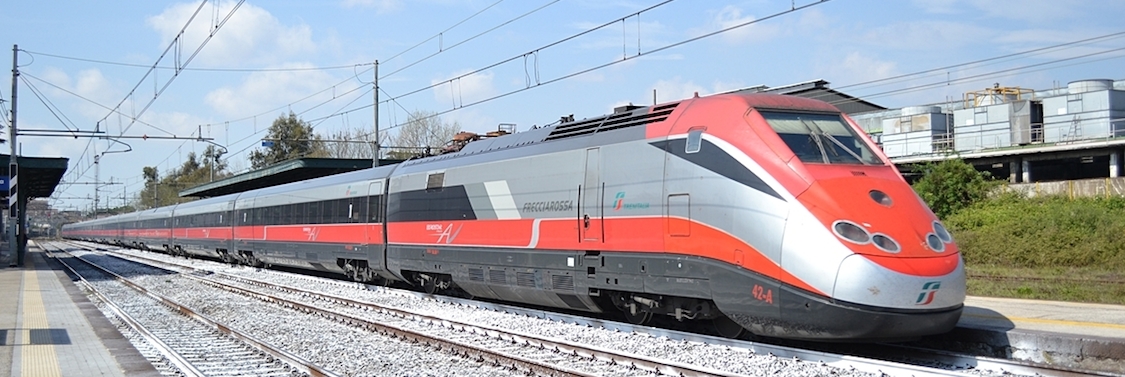High-Speed rail and beyond: 30 years of technology

Source: Finmeccanica Magazine Transportation no.3
Thirty years of high speed rail travel, from the first TGV line to the Milan/Naples.
In Europe, high-speed rail technology ushered in a new dawn for rail transport after a period of long-term, post-war decline. This new development occurred in 1981, when the first TGV (Train Grande Vitesse) line was inaugurated. Ansaldo STS supplied signalling for the line. Prior to this, Italy had paved the way for high speed rail lines in the 1970s with the direct rout between Florence and Rome.
Construction of a dedicated high speed rail line in Italy between Turin and Salerno was completed last December.
It has had a major social and economic impact. Inevitably, the public has been impressed by high-speed trains and very interested in their development.
AnsaldoBreda’s flagship project in Italy is a new very high-speed train commissioned by Trenitalia. FS Group CEO Mauro Moretti was careful to explain that the new ETR1000 will become the new benchmark for very high-speed trains.
Because it has a multi-voltage engine, it can draw power from overhead lines at multiple ratings, which will allow Trenitalia to compete on the European market. The train can reach a maximum speed of up to 400 km/h, but puts no more stress on the infrastructure than a train travelling at 300 km/h. This impressive feat is set to be vital to the future development of high-speed rail.
Faster and faster trains can be built, but it is simply not feasible to rebuild or upgrade infrastructure and rails at a cost of billions of euros every time that speed increases. The most recent lines, such as the Milan/Naples line in Italy, are designed for speeds of up to 350 km/h. trains can travel faster than this, provided that the forces and stresses they pass on to the infrastructure resemble those produced by trains travelling at between 300 and 350 km/h. The second challenge is to build an elegant and comfortable train that offers all of the services people now consider indispensable, including Wi-Fi internet, TV, radio and catering, while also allowing rapid internal reconfiguration in order to cater to different types of train service.
Naturally, the ETR1000 complies with the most recent interoperability standards, including passive collision security and onboard personnel comfort. The train’s design is the result of a partnership between designers at AnsaldoBreda and Bombardier (the consortium that won the contract) and Bertone.
The design brief for the train called for the utmost flexibility. In the space of 202 m, the train can be configured to offer an ambitious 600 seats.
The trains are pre-equipped for commercial service beyond Italy’s borders. The ETR1000 can operate on four different European power systems (1.5 kV dc, 3 kV dc, 15 kV ac and 25 kV ac). New layout and service categories, designated “Executive”, “First Top”, “Business” and “Standard”, offer an alternative to traditional first and second class travel. Solution adopted to enhance usability and accessibility for passengers with reduced mobility, such as specially-equipped toilets adjacent to dedicated external doors, integrated lifts built in to dedicated access doors, and direct access to the bar/bistro area, comply with the most recent international directives in order to ensure the best possible travel experience.
During the ETR1000’s design phase, AnsaldoBreda drew on its experience from the manufacture of 19 high-speed V250 “Albatros” trains for the Holland/Belgium link.
The platform used to build the train for the Dutch and Belgian railways also included a 300 km/h version, the V300. By pooling this expertise with the experience that Bombardier gained with its Zefiro train – the first production examples of which are going to China - meant that it was possible to complete the project in a very short space of time.
The resulting V300 Zefiro is a world-beating, leading-edge technology train.
High-speed rail relies on signalling and control technology. Ansaldo STS is a world leader in this sector. In 1981 the company developed TVM, the first high-speed rail signalling system for the very first TGV line between Paris and Lyon. Twenty-four years later, the company achieved another landmark when it built the first high-speed rail line in the world to incorporate the level II ERTMS system (on the new Rome/Naples line).
Ansaldo STS is also poised to play a lead role in the high-speed rail network development programme announced by the US government on 8 February this year, for which $53 billion is earmarked over a six-year period.
(In the picture above High-Speed train ETR 500 Frecciarossa)
Tags: Automotive & Transport, Ansaldo

